-
Winner announced in the first DARPA FANG Challenge
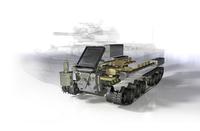
The Ground Systems team outpaces more than 200 teams and 1,000 participants, submitting the winning mobility in the Fast Adaptable Next-Generation Ground Vehicle (FANG) Mobility/Drivetrain Challenge, and drivetrain subsystem design and claiming the $1 million prize.
-
-
New submarine hunting program reaches milestones
DARPA’s Distributed Agile Submarine Hunting (DASH) Program has tested two complementary prototype systems as part of its Phase 2 development effort. The prototypes demonstrated functional sonar, communications, and mobility at deep depths. The successful tests furthered DASH’s goals to apply advances in deep-ocean distributed sonar to help find and track quiet submarines.
-
-
DARPA shows smaller pixels, smaller thermal cameras for soldiers
The U.S. military uses long-wave infrared (LWIR) cameras as thermal imagers to detect humans at night. These cameras are usually mounted on vehicles as they are too large to be carried by a single soldier and are too expensive for individual deployment. DARPA researchers, however, recently demonstrated a new five-micron pixel LWIR camera that could make this class of camera smaller and less expensive.
-
-
Robot makes inspecting power lines simple, inexpensive
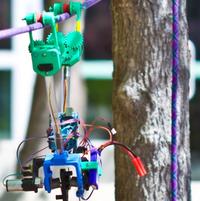
Mechanical engineers invented a robot designed to scoot along utility lines, searching for damage and other problems that require repairs. Made of off-the-shelf electronics and plastic parts printed on an inexpensive 3D printer, the SkySweeper prototype could be scaled up for less than $1,000, making it significantly more economical than the two models of robots currently used to inspect power lines.
-
-
Footwear safety reflectors help in detecting bioterror threats
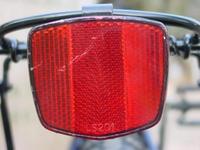
Tiny versions of the reflectors on sneakers and bicycle fenders that help ensure the safety of runners and bikers at night are moving toward another role in detecting bioterrorism threats and diagnosing everyday infectious diseases, scientists said the other day.
-
-
Future computers will identify users by thoughts, not passwords

Instead of typing your password, in the future you may only have to think your password, according to researchers. A new study explores the feasibility of brainwave-based computer authentication as a substitute for passwords.
-
-
More border security means more business opportunities for tech companies
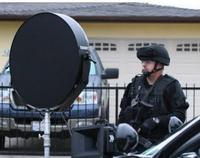
At last month’s Border Security Expo in Phoenix, both start-ups and established companies showed off their inventions in an effort to pitch projects to federal agencies. Two themes emerged in the show: the expo demonstrated that many of the systems and weapons systems that were used in the Iraq and Afghanistan wars are now becoming available to local, state, and federal law enforcement agencies – and companies expressed concern about the impact the federal budget cuts will have on their pockets.
-
-
Finding the right tools to respond to suspicious powder incidents
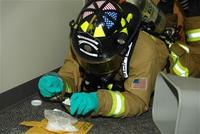
HazMat teams across the United States respond to hundreds of white powder calls each year in large cities where quick decision-making is critical. DHS makes it easier to buy the right technology for bio-threat incidents.
-
-
Nuclear fusion could power a rocket to take humans to Mars
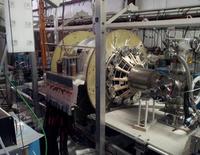
NASA estimates a round-trip human expedition to Mars would take more than four years using current technology. The sheer amount of chemical rocket fuel needed in space would be extremely expensive — the launch costs alone would be more than $12 billion. Now, astronauts could be a step closer to our nearest planetary neighbor through a manipulation of nuclear fusion, the same energy that powers the sun and stars.
-
-
Fully secure communication
Can worldwide communication ever be fully secure? Quantum physicists believe they can provide secret keys using quantum cryptography via satellite. These physicists have, for the first time, successfully transmitted a secure quantum code through the atmosphere from an aircraft to a ground station.
-
-
Exploring the human brain to support national security
The other day, at a White House event, President Barack Obama unveiled a new research initiative designed to revolutionize the understanding of the human brain. DARPA plans $50 million in 2014 investments to translate this increased understanding of brain function to create new capabilities.
-
-
Large robotic jellyfish to patrol the oceans
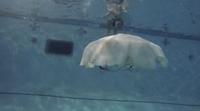
The Office of Naval Research wants to place self-powering, autonomous machines in waters for the purposes of surveillance and monitoring the environment, in addition to other uses such as studying aquatic life, mapping ocean floors, and monitoring ocean currents. Researchers have built a device for that purpose — a life-like, autonomous robotic jellyfish the size and weight of a grown man, 5 foot 7 inches in length and weighing 170 pounds.
-
-
GAO lauds U.S. Navy's science and technology R&D
The Office of Naval Research (ONR) is the Department of the Navy’s science and technology (S&T) provider, charged with discovering, developing, and transitioning innovative S&T to meet soldier needs. Since its inception in 1946, ONR research efforts have supported the development of the laser, GPS, transistors, fiber optics, radar, cell phones, and more. A recent Government Accountability Office (GAO) report cites ONR’s Future Naval Capabilities (FNC) as an example of efficient, cost-effective program for making science and technology research functional.
-
-
Tactile helmet helps first responders in challenging conditions
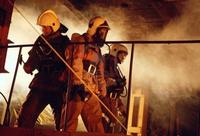
A specially-adapted “tactile helmet,” developed by researchers at the University of Sheffield, could provide fire-fighters operating in challenging conditions with vital clues about their surroundings. The helmet is fitted with a number of ultrasound sensors which are used to detect the distances between the helmet and nearby walls or other obstacles.
-
-
A more powerful terahertz imaging system developed
Low-energy terahertz radiation could potentially enable doctors to see deep into tissues without the damaging effects of X-rays, or allow security guards to identify chemicals in a package without opening it. An electrical engineering research team has developed a laser-powered terahertz source and detector system which transmits with fifty times more power and receives with thirty times more sensitivity than existing technologies. This offers 1,500 times more powerful systems for imaging and sensing applications.
-
More headlines
The long view
Risk Assessment with Machine Learning
Researchers utilize geological survey data and machine learning algorithms for accurately predicting liquefaction risk in earthquake-prone areas.
Bookshelf: Smartphones Shape War in Hyperconnected World
The smartphone is helping to shape the conduct and representation of contemporary war. A new book argues that as an operative device, the smartphone is now “being used as a central weapon of war.”
New Approach Detects Adversarial Attacks in Multimodal AI Systems
New vulnerabilities have emerged with the rapid advancement and adoption of multimodal foundational AI models, significantly expanding the potential for cybersecurity attacks. Topological signatures key to revealing attacks, identifying origins of threats.
